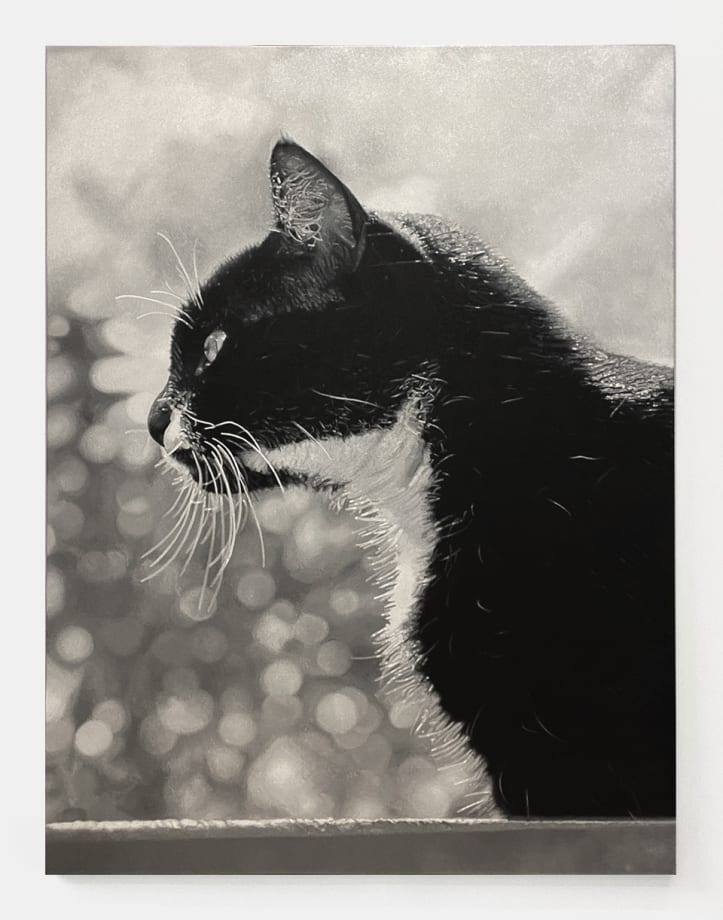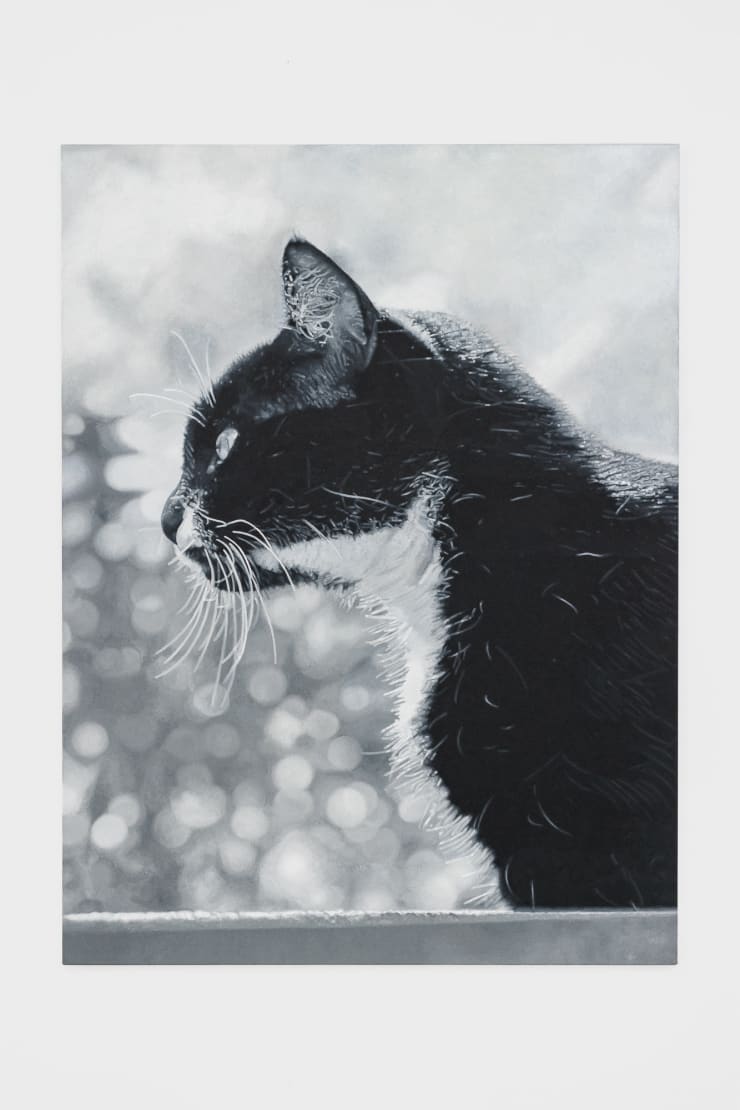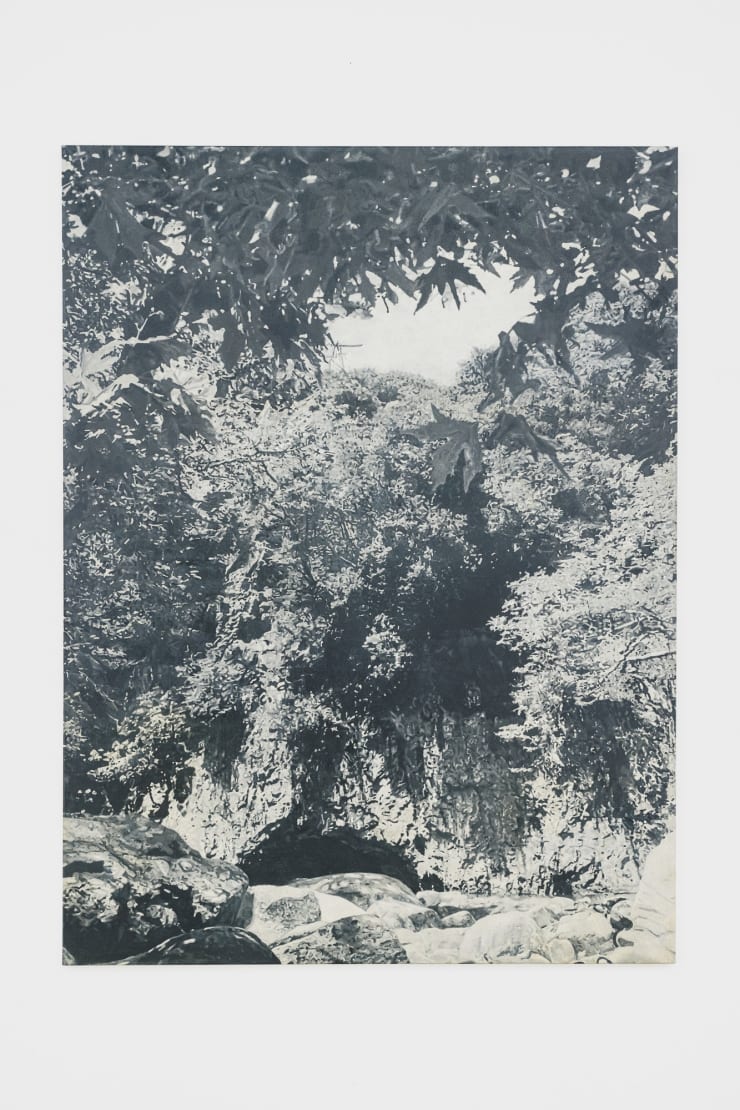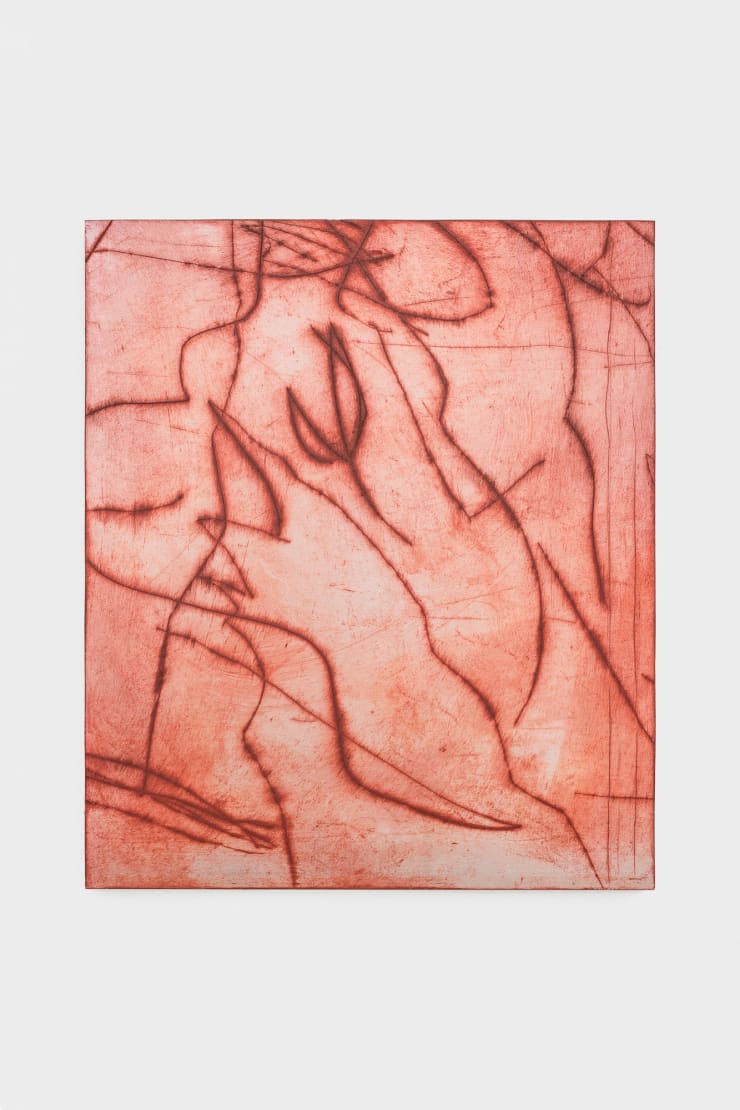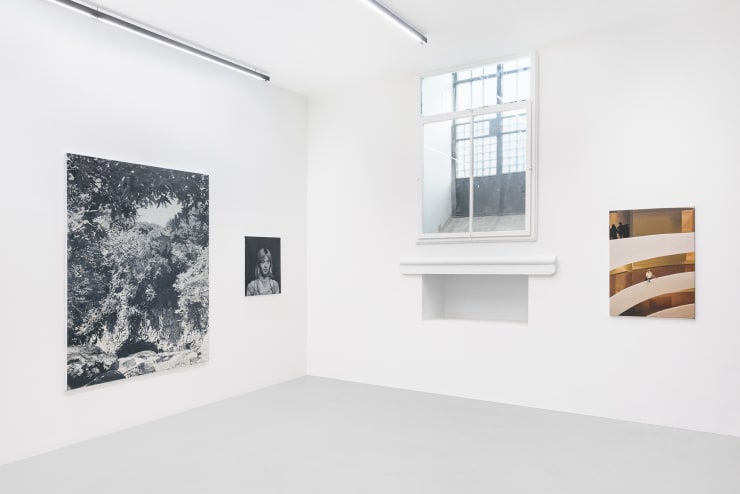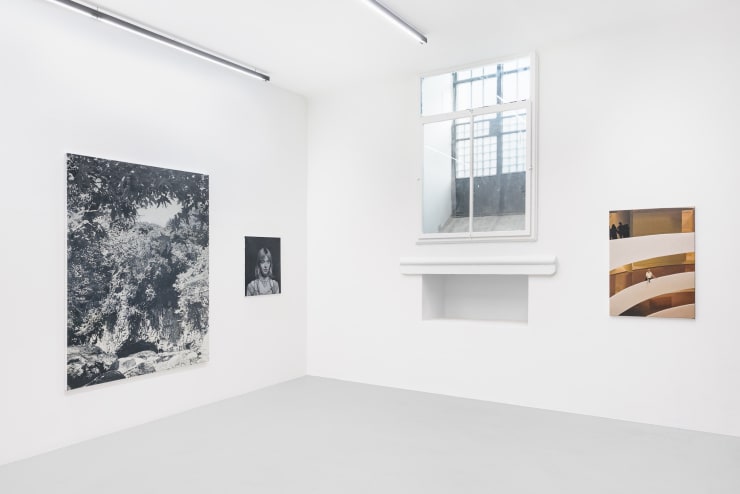Paco Koenig: NOT BE PAINTED
Paco Koenig (b.1990) grew up between Berlin and a small island in the northern Aegean Sea. During his studies in Architecture at the Universität der Künste Berlin he started to pursue a diverse practice characterised by a commitment to painting and its formal and conceptual possibilities. He focuses on the materials, on how to paint, the surfaces, on the brushwork, the textures and all the subtle nuances of the structures that make a painting. Despite their material disparities, all works share the random or deliberate painterly traces that appear on their surface.
Koenig tries to reflect on the conceptual foundations of painting, producing abstract works using non-traditional materials like aluminium panels and figurative works on canvas based on photographs that challenge the reproduction and consumption of everyday imagery.
Koenig currently lives and works in Berlin, Germany. Recent exhibitions include: Maybe It Was Magic at Miettinen Collection (2025), Video Center at Zenrale.Space (2024), Extraordinary Form Abstract and non-figurative art from the Miettinen Collection Part II (2024), Paintings at Architektur Galerie Berlin (2023), RAW at Gallery Vacancy Shanghai (2022), Do You Dream In Colour? at Galerie Lisa Kandlhofer (2021), Load Management at Spoiler (2020)
-
 Paco KönigGUGGENHEIM (DAGMAR) , 2025Oil on Linen100 x 70 cm
Paco KönigGUGGENHEIM (DAGMAR) , 2025Oil on Linen100 x 70 cm
39 3/8 x 27 1/2 in -
 Paco KönigPICASSO, 2024Oil on Linen200 x 150 cm
Paco KönigPICASSO, 2024Oil on Linen200 x 150 cm
78 3/4 x 59 in -
 Paco KönigFONIAS II, 2024Oil on Linen200 x 150 cm
Paco KönigFONIAS II, 2024Oil on Linen200 x 150 cm
78 3/4 x 59 in -
 Paco KoenigJOMO, 2023Oil on Aluminium200 x 150 cm
Paco KoenigJOMO, 2023Oil on Aluminium200 x 150 cm
78 3/4 x 59 in -
 Paco KoenigUNTITLED, 2025Oil on Aluminium40 x 33 cm
Paco KoenigUNTITLED, 2025Oil on Aluminium40 x 33 cm
15 3/4 x 13 in -
 Paco KoenigUNTITLED, 2025Oil on Aluminium40 x 33 cm
Paco KoenigUNTITLED, 2025Oil on Aluminium40 x 33 cm
15 3/4 x 13 in -
 Paco KoenigUNTITLED, 2025Oil on Aluminium40 x 33 cm
Paco KoenigUNTITLED, 2025Oil on Aluminium40 x 33 cm
15 3/4 x 13 in -
 Paco KoenigUNTITLED, 2025Oil on Aluminium40 x 33 cm
Paco KoenigUNTITLED, 2025Oil on Aluminium40 x 33 cm
15 3/4 x 13 in -
 Paco KoenigUNTITLED, 2025Oil on Aluminium40 x 33 cm
Paco KoenigUNTITLED, 2025Oil on Aluminium40 x 33 cm
15 3/4 x 13 in
First of all what is Beautiful? The primary condition of the Beautiful is unity in variety, that is the principle.(1)
The abstract works put an emphasis on the value of distortion, or what one might call productive de-facement. A productive response to defacement, the persistent aim, through experimentation, of adding the effect of uncertainty to painting is, however, absorbed by the unbroken belief in the certainty of painting. The work has concrete and physical limits, within which the gestures are dissected. The consequences of uncertainty in painting, is depicted in the form of damage that a picture under production can suffer at any given moment.
Wired gestures inscribed in the surfaces form abstract arrangements on the aluminium surfaces, the marks are crossing and overlaying each other, condensing into bundles before fleeing into the void. Upon the smaller format the works try to occupy and survey this particular space.
Much more reduced in this small-scale, the paintings are composed of gestural marks which underscore the intuitive moment that is intrinsic to the act of drawing. The result seems to be impulsive and spontaneous, it is in its entirety subtly constructed. Balancing the immediacy of free gesture with restricted mark-making, the paintings oscillate between geometric rigidity and organic forms. The Aluminium works reflect on the physical qualities of mark making and various modes of reproduction.
The oil paintings and photographic portraits, sourced from existing images, often painted on a vast scale, tread the line between original and reproduction, invoking human presence despite the very absence of artistic authorship.
The Photo Paintings blur the boundary between abstraction and representation by reflecting on the physical qualities of painting and the processes behind its production. Upon closer consideration, the photographic realism dissolves into a painterly abstraction composed from a meticulous system of subtle brushstrokes that cover the surface with a textured physicality.
I don't want my work to feel all tormented. Even though a lot of time is inherited in them, ideally they'd appear effortless seeming. That doesn't mean it actually is easy. And it doesn't mean you don't have a foundation on which your work stands. I want the works to just appear. Not be painted. Just appear.
(1)Richard Flood, Wool Gathering, Parkett 83, 2008
-
 Paco KoenigInstallation View: NOT TO BE PAINTED, Galerie Kandlhofer, Vienna, 2025
Paco KoenigInstallation View: NOT TO BE PAINTED, Galerie Kandlhofer, Vienna, 2025 -
 Paco KoenigInstallation View: 'NOT TO BE PAINTED', Galerie Kandlhofer, Vienna, 2025
Paco KoenigInstallation View: 'NOT TO BE PAINTED', Galerie Kandlhofer, Vienna, 2025 -
 Paco KoenigInstallation View: 'NOT TO BE PAINTED', Galerie Kandlhofer, Vienna, 2025
Paco KoenigInstallation View: 'NOT TO BE PAINTED', Galerie Kandlhofer, Vienna, 2025 -
 Paco KoenigInstallation View: 'NOT TO BE PAINTED', Galerie Kandlhofer, Vienna, 2025
Paco KoenigInstallation View: 'NOT TO BE PAINTED', Galerie Kandlhofer, Vienna, 2025 -
 Paco KoenigInstallation View: 'NOT TO BE PAINTED', Galerie Kandlhofer, Vienna, 2025
Paco KoenigInstallation View: 'NOT TO BE PAINTED', Galerie Kandlhofer, Vienna, 2025
